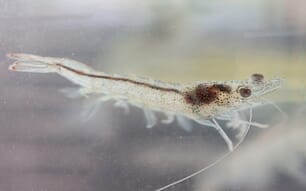Minister of Agriculture and Fisheries, Mariano Assanami Sabino, endorsed the strategy stating that combating poverty and malnutrition has been a foremost priority of the government since its independence in 2002.
Developed with assistance from WorldFish, the strategy spans from 2012 to 2030 and will focus on building new infrastructure and technical ability to support aquaculture enterprises, which will also lead to improved economic growth.
Excellency Assanami says that developing aquaculture will bring much needed benefits to the country.
“Aquaculture contributes to food and nutrition security and resilience, diversification of livelihoods of inland and coastal communities, and economic growth in Timor-Leste,” he says.
Fish provide animal protein, essential fatty acids and micronutrients like Vitamin A, Iron, Zinc and Calcium essential for a balanced diet.
It also plays an important role in supplying essential fats for brain development and cognition in the first 1,000 days of a child’s life.
Remarkably, fish also help the body to absorb micronutrients, particularly Iron and Zinc, from other foods in a meal.
The Minister adds that developing environmentally and economically sustainable fish farms will help increase household incomes for many of the poor by creating new job opportunities through small and medium-size businesses, and the sale of farmed fish.
New fish markets will also be created to reach families in need throughout the country.
Increasing the supply of fish in local markets will lower the price, making it more affordable for the poor, and helping to raise fish consumption levels.
The annual per capita consumption of fish in Timor-Leste is less than half of the global average at only 6.1kg, which The National Aquaculture Development Strategy aims to raise to 15kg by 2020.
“Increasing the average per capita fish consumption by 2020 will lead to a reduction in malnutrition rates and improved food and nutrition security. Aquaculture will increase the number of men, women and children in poor and vulnerable households deriving direct nutrition, food and income benefits from fish,” says Mr Assanami.



